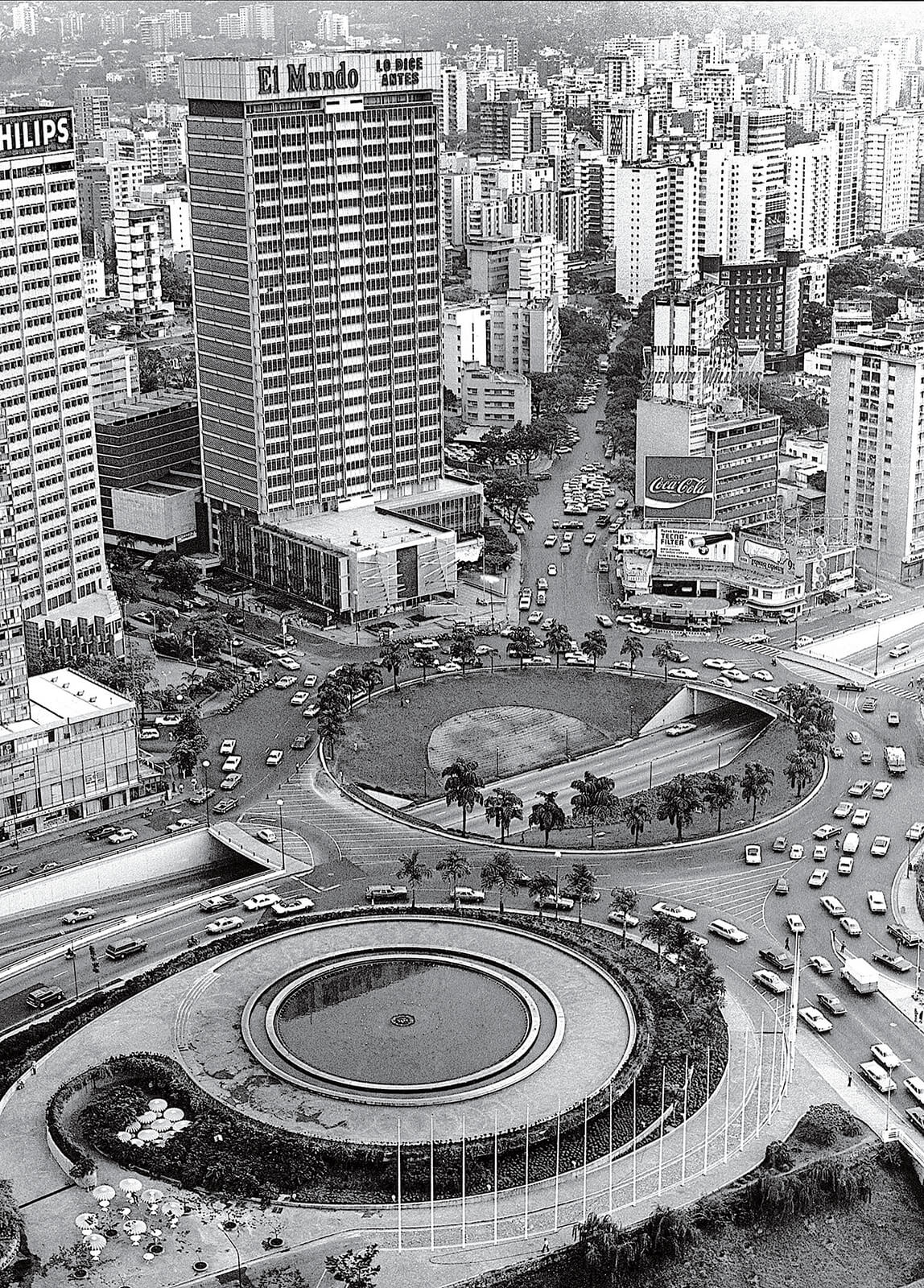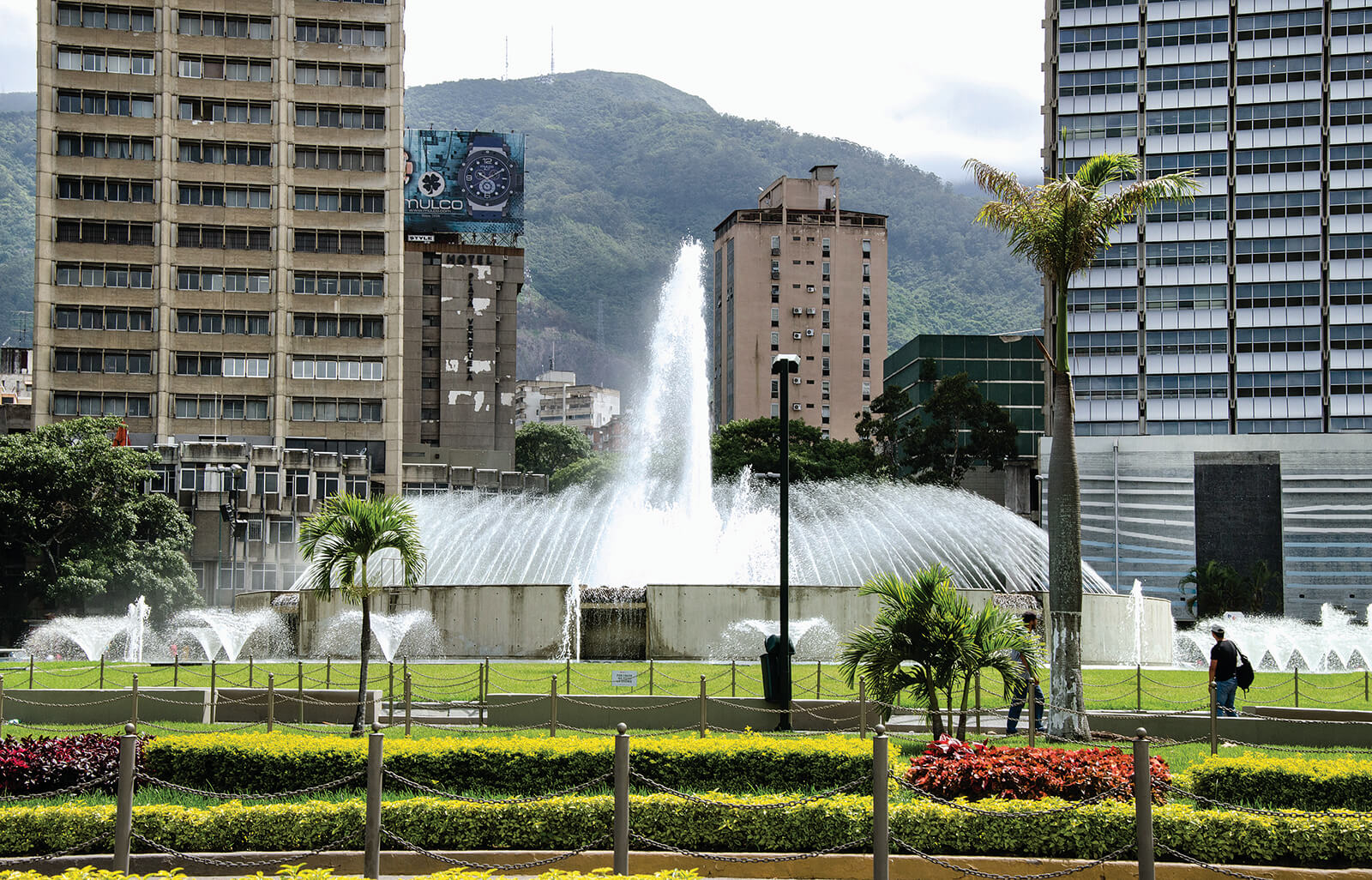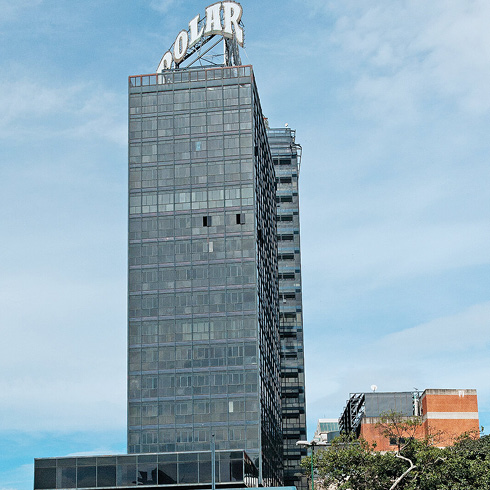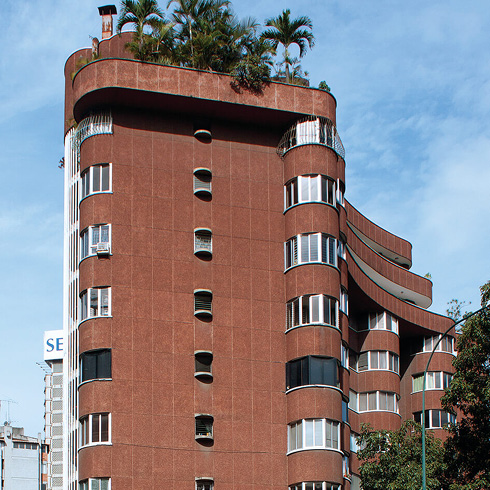DDN
Plaza Venezuela has historically swung from being a traffic circle decorated by a fountain or being a meeting place. Located at the geometric center of the Caracas valley, within Los Caobos urban development (promoted by Luis Roche and Enrique García Maldonado), its design has been renovated several times, as well as its central sculpture (originally human figures sculpted by Ernesto Maragall), later replaced by another fountain designed by engineer Santos Michelena (recently reactivated), and remaining a city emblem. Between the two versions, a third one emptied the circle of the plaza and converted it into grassy slopes next to the vehicle underpass. Los Caobos, emulating the English suburb garden, has a longitudinal layout of slightly curved streets that begin at Plaza Venezuela and originally connected the road layout with the Carretera del Este (now Gran Avenida). Five roads leave from this plaza in a northerly direction and end in Avenida Andrés Bello, among which is Avenida La Salle, with a tree-lined central island and a pair of semicircular slopes where the Apostolic Nunciature (by Mujica Millán) stands. The neighborhood gradually underwent changes, like the construction of Avenida Liber-tador over the old central railroad line and the removal of large-scale advertising -over the towers bordering Plaza Venezuela- which gave it a metropolitan scale reading. It has currently recovered its nighttime color thanks to the water fountain with music and light synchronicity.

FFU

NE-26




